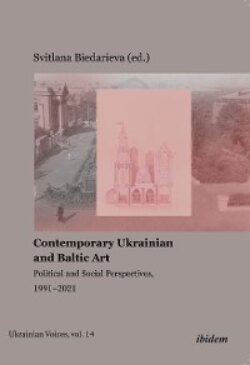Читать книгу Contemporary Ukrainian and Baltic Art - Группа авторов - Страница 12
На сайте Литреса книга снята с продажи.
Peripheries and postsocialist precarities
ОглавлениеThe entanglements of postsocialist and postcolonial conditions refer not only to temporality—that is, a certain point after socialism—but also to spatial contexts and larger geopolitical shifts. Thus, they are part not only of the local history of a particular region but also of a global condition. Discussing this idea, the scholar Jennifer Suchland introduces the concept of “postsocialist precarity,” which can help us understand the struggles of the former second world to rejoin the world system while being perpetually assigned to a peripheral role and facing other differentiating particularities of postsocialist contexts, like low visibility or lag. (Koobak, Tlostanova, and Thapar-Björkert 2021, 8)
The relationship between center and periphery has long been a broadly discussed aspect of global contemporaneity, and even though their dichotomy and binarism is increasingly challenged, they are still principal notions in postsocialist and postcolonial vocabularies, as they “continue being recast by the inner contradictions of a global world (dis)order” and in significant ways still determine the image of contemporary art. (Smith 2017, 8) This problem applies to the Baltic region and its art scenes in a significant way, as the postsocialist changes have not only brought the region closer to the global world but have also created new geographical, mental, and imaginary distances. The Baltics are still often described as the liminal, marginal, peripheric, and culturally and politically different “edge of Europe.” (Duester 2014) However, challenging this, regional art communities have been looking for different strategies—both confrontational and relational—to reflect on these contradictions, working with contexts that have global implications and seeking ways to achieve better visibility and the international convertibility of their art scenes. Tactics for gaining visibility for peripheries, as art historian Carmen Popescu has argued, are both contextualization and decontextualization—that is, either aiming for comprehensibility and rendering it visible by unfolding its peculiar context and particularities, or following the canon and thus wiping all specificities by situating the periphery in the picture of the (familiar) grand narrative. (Popescu 2014, 9)
Mapping the context of and commenting on relations between local, regional, and global art space and their artistic positions can be done efficiently by artworks and exhibitions. The traveling art project curated by Rael Artel and titled Your Periphery is My Center (2011), which included an event series and several exhibitions in the Baltics and Poland, zoomed-in on the perspective of those who live and work in these “margins.”14 The project critically reflected on the phenomenon of artists living and working in the marginal regions of the (art) world, bringing under discussion aspects of (self-)isolation, survival strategies, (self-)colonialism, alternative working methods, and life styles and cultural translation processes. The project not only reversed polarized notions of the center and periphery, but also brought in an active and personal dimension, as “the panorama itself, and artistic possibility within it, looks very different depending on where you are—your location, your viewpoint, your sense of agency, and your actual effectiveness.” (Smith 2017, 8) It focused on entanglements between the postsocialist and postcolonial syndrome of regional art scenes as a hybrid state in which desires, illusions, and disappointments simultaneously alternate. This was vividly embodied in a video installation by Flo Kasearu, titled Riga Runaway (2011), an animation loop of a running white horse that was projected on city surfaces from a black BMW moving through the city of Riga at night. The horse appeared and disappeared, depending on the city landscape, which became a projection screen. As an object of desire, whose illusions also bring regret when it is realized that it is only a screened projection, the image of a white horse could be read as a metaphor for the frustration of the local art scenes, whose participants strive for unfulfilled desires while experiencing a feeling of incompleteness and the wish to be both different from western discourses and included within them. (Rudovska 2011, 17)
The art events that most foreground the abovementioned complexities of art geographies are large-scale exhibitions, which are often positioned as international agents that aim to integrate the culture of the so-called peripheral regions into global circulation and decentralize the hierarchies of these geographies. Close-ups of three such recent exhibitions, which happened almost simultaneously in Riga and other Baltic capitals in 2018, tellingly reveal this complexity in relation to the aspects of change, peripherality, (de)constructions of identity, (trans)nationalism, postsocialist and postcolonial conditions, and other themes discussed in this article. These are the first edition of Riga Biennial, the 10th art festival Survival Kit, and the 13th Baltic Triennial. Different in their approaches and concepts, as well as in their embeddedness and interest in the regional art scenes, they vividly revealed both the recent artistic positions and beliefs and contradictions.
